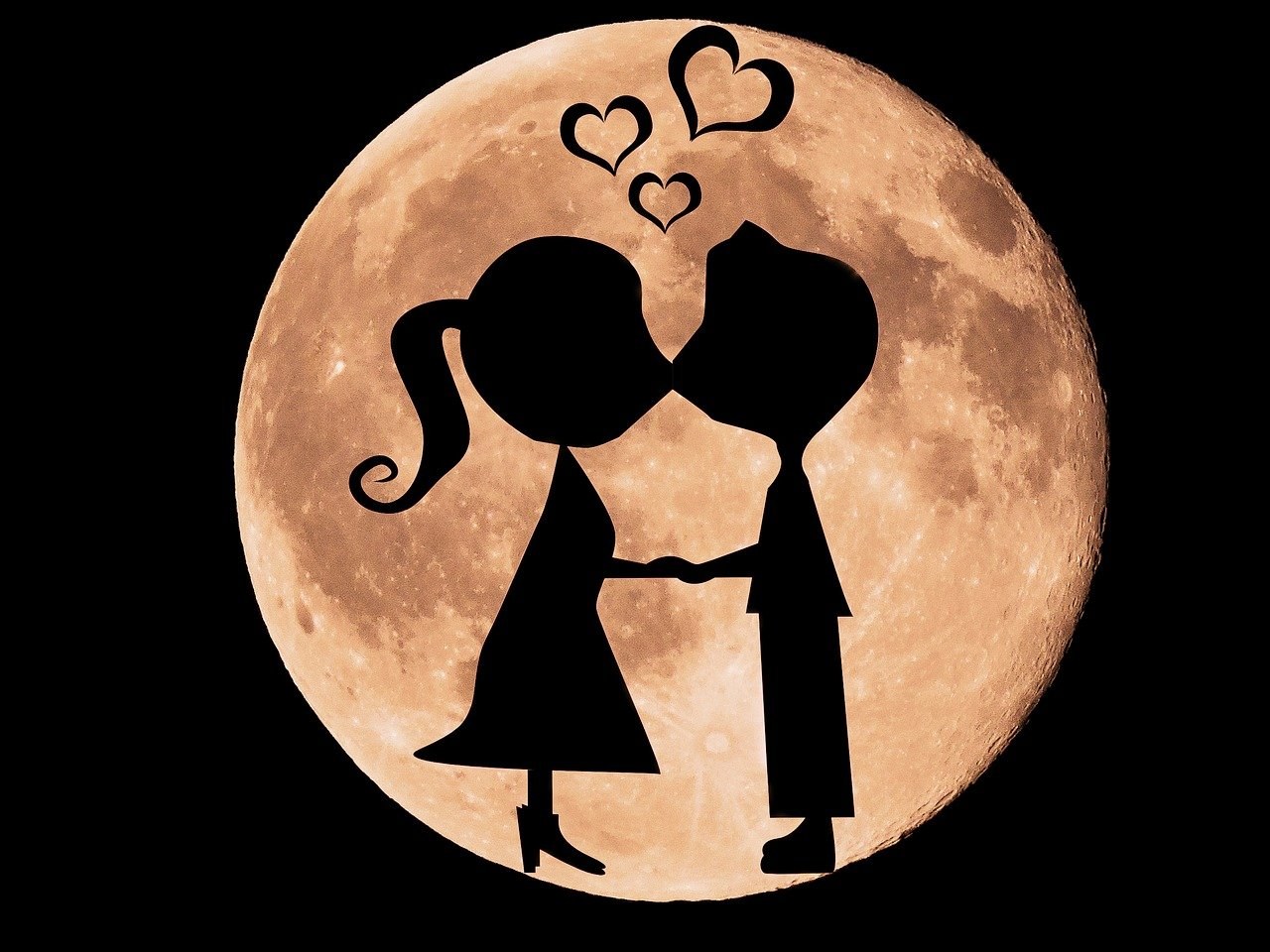Trying to pin down the sensation of being in love is like trying to describe a color to someone who has never seen it – words get close, but the experience keeps spilling over the edges. The feeling shows up differently from person to person, yet familiar patterns emerge: a tug toward one particular face in a crowded room, an ease that quiets your chest, a new kind of bravery you didn’t know you had. This guide gathers those shared patterns and arranges them with care so you can recognize the terrain when you find yourself being in love.
What love often is – and what it isn’t
Love can look like steadfast affection that grows slowly, or like a spark that lights up every corner of your day; both are real. It isn’t simply liking on steroids or a neat equation you can solve once and for all – it’s a living bond that changes shape as you do. That’s why being in love can feel chaotic one week and grounding the next.
There’s another important distinction: loving friends and family is profound, but the romantic strand carries its own chemistry – a magnetism, a private language, a shared future you can suddenly picture with surprising clarity. You don’t choose every beat of it, yet you do participate; the daily acts of listening, caring, and showing up keep being in love from fading into a pleasant daydream.

How it tends to feel day to day
Below is a continuous, plain-spoken catalog of sensations and shifts many people report. It won’t match every heartbeat, but it should give you anchors when you’re wondering what exactly is happening inside your chest while being in love.
- You think about them when nothing else demands your attention – not obsessively, but the way a favorite melody returns while you wash dishes or wait for a bus. That steady echo is a quiet sign of being in love.
- Their joy and hurt travel to you quickly, as if your feelings have become neighboring houses with an open gate. You don’t merely sympathize; you flinch when they flinch, which is a hallmark of being in love.
- Explanations fall short. You can list their gifts and quirks, yet the list never equals the pull. The bond resists tidy logic, and you make peace with that mystery while being in love.
- Your future drafts itself in the margins of your day – not a rigid plan, more like a map with warm landmarks: trips, family traditions, ordinary Tuesdays. That gentle foresight is common when you’re being in love.
- Compromise stops feeling like defeat. You happily shift a plan or preference because their smile outshines the original agenda; meeting in the middle becomes natural in being in love.
- You want them to thrive, even when you aren’t the direct beneficiary. Encouraging their growth becomes a reflex, which is one of the purest signals of being in love.
- Home becomes a person more than a place. A couch, a curb, an airport bench – anywhere beside them carries a sense of safety that deepens being in love.
- The world gains saturation. Coffee tastes brighter, traffic stings less, and even cloudy mornings have edges of gold. That shift in palette often accompanies being in love.
- It can be frightening. When something matters this much, the thought of losing it can rattle you. With trust and steady communication, that fear shrinks instead of steering the ship – a balance central to being in love.
Everyday advantages that quietly stack up
Love isn’t only fireworks – it’s also a string of practical, surprisingly sturdy benefits that change how you move through the week. To keep our catalog continuous, we’ll pick up the numbering here; the order isn’t a ranking so much as a rhythm found in being in love.
- A reliable support system appears. Your ambitions stop feeling like solo missions because someone believes in your aims and stands beside you – a durable perk of being in love.
- Acceptance gets real. You’re known in the round – flaws, odd jokes, old fears – and still welcomed. That kind of acceptance feeds a calmer version of being in love.
- Confidence rises. With steady affirmation, you risk a new class, ask for a raise, or simply walk taller. The mirror becomes less of an adversary when you’re being in love.
- Purpose clarifies. Even if your career and hobbies remain the same, the “why” behind them sharpens because your life now holds a shared horizon. That sense of direction frequently accompanies being in love.
- Understanding requires fewer words. They catch your tone, your micro-pauses, your eyebrow grammar – the shorthand couples build over time is one of the quiet joys of being in love.
- Loneliness loosens its grip. Even on nights apart, the bond hums in the background like a nightlight; solitude feels chosen rather than imposed during being in love.
- There’s always someone to tell. News finds its way to them first – triumphs, annoyances, odd little stories – because sharing doubles the good and halves the hard in being in love.
- A deeper sense of security grows. Not the financial kind, but the kind that whispers, “We’re a team.” Doubts from early dating – Do they like me? Was that weird? – fade as being in love steadies the ground.
- Intimacy blossoms. Physical closeness feels richer when it’s carried by trust and tenderness; vulnerability amplifies pleasure rather than threatening it, a frequent outcome of being in love.
- Dreaming together becomes practical. You imagine holidays, a cozy place to live, perhaps a family – possibilities stop feeling like fog and start feeling like paths. That realism is part of being in love.
- Touch becomes a daily language. A hand on the back, a forehead kiss, a long hug after a hard meeting – these rituals calm your nerves and reinforce the bond while being in love.
Separating the feeling from the fantasy
Sometimes the glow you’re chasing isn’t a person but an idea. There’s no shame in wanting romance – just be honest about whether the heartbeat in front of you matches the story in your head. The list continues so you can contrast the signs; noticing one or two doesn’t doom a relationship, but a pattern matters when you care about being in love.

- “Finding The One” becomes your sole mission. When the hunt overshadows the human, it’s easy to confuse adrenaline for connection; that detour can cloud being in love.
- You habitually try to rewrite your partner. Suggesting growth is healthy, but constantly reshaping someone into your blueprint points to loving the idea rather than being in love.
- You leapfrog from relationship to relationship. If you fear the quiet of single seasons, you may choose speed over fit – which shortchanges the depth required for being in love.
- Your “ideal partner” is a mirror. If the fantasy exists mainly to validate you, the relationship orbits your needs alone, starving the reciprocity essential to being in love.
- You know the affection is thin but cling anyway. The label matters more than the lived reality, which keeps you from the sturdier joy of truly being in love.
- Faithfulness wobbles because one person never feels like “enough.” That restless scanning for upgrades signals a mismatch with the commitment at the core of being in love.
- You never take it slow. Whirlwinds can be fun, but if you refuse to pace the bond, the flame often outburns the wick – leaving little room for sustainable being in love.
- You doubt whether there’s anything worth fighting for. When challenges arrive, you question the relationship more than you roll up your sleeves – the inverse of being in love.
- Your self-esteem hinges entirely on romantic status. When you feel unworthy without a partner, you may chase validation rather than the mutuality found in being in love.
- The everyday work feels exhausting. Caring through sick days, hard months, or conflicting schedules is part of the deal; if ordinary devotion drains you, you might be chasing the concept instead of being in love.
Why timing can feel uncanny
Love often ambushes us while we’re busy with something else – packing for a move, ordering a sandwich, racing to catch a train. When you stop gripping the steering wheel with white knuckles, the right connection sometimes wanders into view. That doesn’t make destiny a vending machine; it just means openness creates space for being in love.
Once the bond arrives, the emotional weather can flip without warning: heady and bright on Monday, serene by Friday, steady and domestic next spring. None of that volatility means it’s less real. It means the connection is alive, responding to your seasons, inviting you to keep choosing the other person – which is the beating heart of being in love.
So what does it feel like? It’s equal parts spark and shelter, risk and reassurance. You’ll find yourself braver in some places and softer in others; you’ll laugh more, apologize faster, and build rituals that turn ordinary days into tiny celebrations. You won’t be able to graph it on a whiteboard, and you won’t need to – you’ll know by the way your life stretches to make room, by the quiet “yes” you hear before sleep, by the steady warmth of being in love.

If you’re still unsure, pay attention to your body and your calendar. Do you breathe easier around them? Do your plans naturally include their well-being? When conflict lands, do you reach for repair rather than the nearest exit? These are small but reliable compasses that point toward being in love.
You don’t have to manufacture grand gestures to prove anything. Show up. Listen. Tell the truth kindly. Rest when you’re tired and offer rest when they are. Let your affection mature from fireworks into a hearth – a place you both return to, night after night, because it’s warm and real and yours. That’s the everyday miracle of being in love.
And if you need a final nudge – think of the moments you’re tempted to dismiss as “ordinary”: sharing a sandwich, swapping playlists, folding laundry, borrowing a hoodie that still smells like their shampoo. If those plain scenes feel oddly luminous, that glow is worth noticing. Call it what it is, claim it, and keep tending it, gently and consistently, as you go on being in love.
One last reminder for the cautious heart: vulnerability isn’t a cliff you jump from once; it’s a door you open a little wider as trust proves itself. Step by step, season by season – 2020-2025 or beyond – the bond can deepen without drama. That slow burn is not a consolation prize; it’s often the most sustainable form of being in love.
All of this may read like a paradox – and perhaps it is. Love is both thunder and whisper, rush and rest. When you catch yourself smiling at your phone for no reason, or finding courage to have the awkward conversation because the relationship deserves honesty, you’re already speaking its language. Welcome to the tender, steady, surprising work of being in love.
If you’re waiting for a perfect definition, you’ll miss the living proof right in front of you – the way your life subtly reorganizes around care, the way ordinary minutes feel generously lit, the way your heart insists on the gentle, daily practice of being in love.